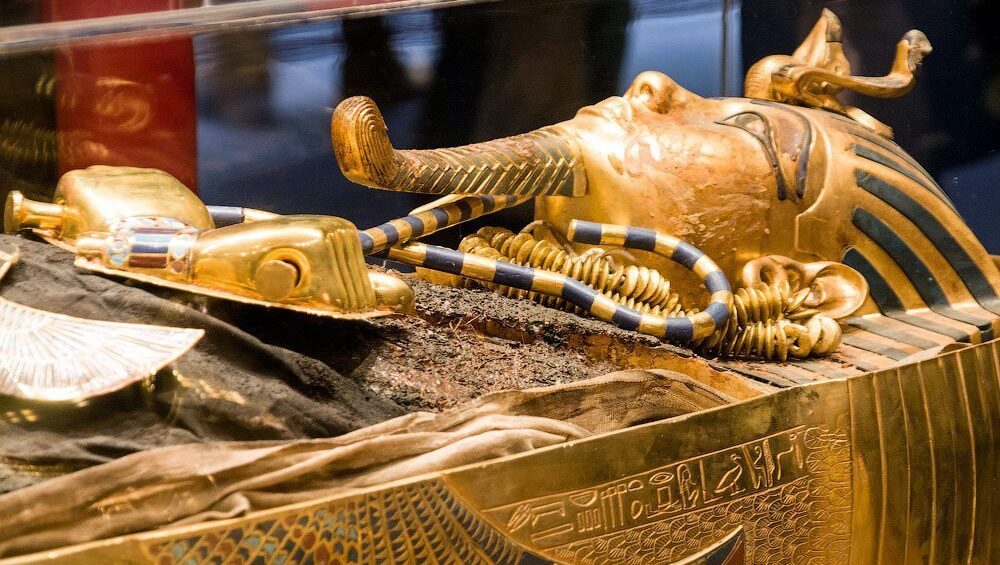King Tutankhamun’s tomb, discovered in the Valley of the Kings in 1922 by Howard Carter, stands out as the only relatively untouched royal tomb in the area, making it one of the most significant archaeological finds in history. The global fascination was fueled by the wealth of golden artifacts and other luxurious items found within, symbolizing Egypt’s rich heritage.
Tomb number 62, belonging to Tutankhamun, is notably modest in size and decoration compared to other royal tombs. This likely reflects Tutankhamun’s short reign of about nine years, having ascended the throne at a young age. The tomb’s relative simplicity sparks curiosity about the potential contents of larger tombs, including that of Ramesses II.
The tomb’s main decorative elements are its wall paintings. Unlike other tombs which are lavishly adorned with texts like the Amduat and the Book of Gates to aid the deceased king’s journey to the afterlife, Tutankhamun’s tomb features only one scene from the Amduat. The rest of the decorations depict Tutankhamun in the company of various gods.
The small size of Tomb KV62 has led to much speculation. Tutankhamun’s successor, the high official Ai (buried in Tomb KV23), and Ai’s successor, Haremheb (Tomb KV57), might have originally intended the tomb for themselves. It’s possible that Tomb KV62 was already in existence, perhaps as a private burial or a storeroom, before being repurposed and expanded for the king.
The tomb’s limited space was packed with approximately 5,000 objects, reflecting Tutankhamun’s royal life. These items, including clothing, jewelry, cosmetics, furniture, toys, vessels, chariots, and weapons, were part of his daily life.
In an ironic twist of history, Tutankhamun, a relatively minor king who was overshadowed due to his association with the unpopular King Akhenaten, has eclipsed many of Egypt’s more renowned pharaohs in fame.




